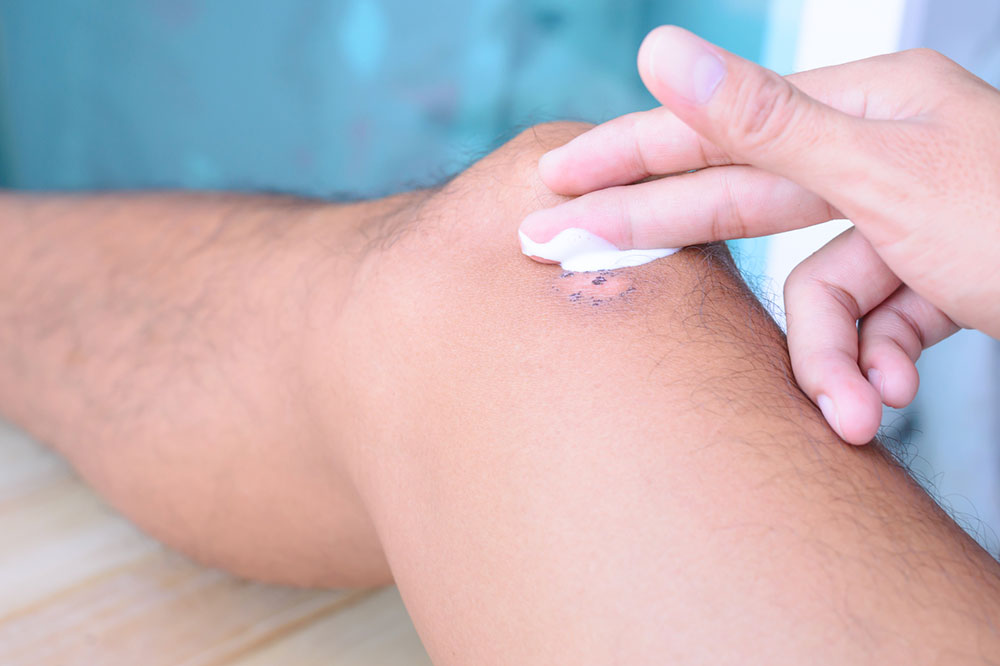
6 effective methods to help remove scar tissue
Scars are composed of fibrous tissue formation triggered by the body’s natural healing mechanism. It usually develops over a wound or exposed skin caused due to an injury, health complication, infection, or even inflammation of the skin. Scars may also develop in different shapes and sizes, often varying in terms of severity. But it is possible to manage scarring with treatments suggested by dermatologists and cosmetic surgeons. Here are the top six options.
Dermabrasion
Dermabrasion is one of the common scar tissue treatments suggested for most people who experience mild to moderate scarring. It is a controlled invasive scraping technique that helps doctors excavate the excess tissue. Dermabrasion is usually done to remove any irregularities of tissue formation and smoothen the skin’s surface to improve its appearance. Alternatively referred to as dermaplaning, this treatment is most effective in a targeted cluster of scar tissue growth. Common causes of this growth range from deep acne, pre-cancerous tumors, traumatic accidents, and excess tissue left over after surgery. Some people get dermabrasion done to remove fine lines and improve overall facial appearance. The cost of this procedure will depend on the surface area covered. More importantly, treatment length will be determined based on the extent of dermaplaning necessary to restore a somewhat natural skin appearance.
Collagen injection
Collagen is the natural protein found in the body produced for maintaining skin and tissue structural integrity. Lack of collagen is one of the primary triggers of fine lines and wrinkles as one ages. When scar tissue forms due to any surgical or underlying skin causes, the resulting excess tissue also triggers an accumulation of collagen under the skin. Cosmetic surgeons use silicone and corticosteroid-based intravenous options that helps break down this excess collagen to improve skin appearance. Alternatively, some adults may face an issue with the production of collagen itself, so cosmetic surgeons administer purified cow collagen synthesized to overcome scar tissue problems.
Chemical peels
Some types of scars can be removed using a chemical peel technique. A special chemical application is spread over the skin’s surface to peel and remove the top layer. If the scar is not too deep, the excess layer of dead skin and damaged tissue will also come right off with a few repeated rounds of chemical peels. The new skin that grows and forms over the old scarring is less irregular in shape and improves the texture and overall appearance of the skin. Note that chemical peels cannot be used on sensitive skin types and for deep tissue scars as they can only help rectify mild surface tissue scarring.
Laser resurfacing
Laser resurfacing is another alternative scar tissue treatment that can only help improve the appearance of the outer skin to some extent. The treatment cannot be used to fix deep tissue scars caused by severe injuries or procedures done to treat underlying conditions. Today, lasers are the preferred mode of treatment due to innovations in health sciences, making them the least invasive of available options. Also, laser surgery can be done in the shortest possible time, and the procedure promises a faster recovery than other treatments. Cosmetic surgeons use a pulsed dye laser to prevent the scar from being raised, reduce pain, and increase the range of motion by removing dead tissue blocks.
Surgical scar revision
Scar revision is suggested for revising long and oddly shaped scars. Severe injuries or major underlying health conditions leading to scarring need slightly more invasive procedures with a significantly longer recovery timeline. Plastic surgeons can perform one of four unique scar revision surgeries. One option is the scar excision technique, where all scar tissue is completely cut out and removed, after which the skin around the wound is closed. This is possible only with smaller scars. Alternatively, the Z- or W-plasty procedure allows the doctor to reposition the scar along the skin’s natural lines. A third option here is skin grafting, often suggested for burn patients, where the surgeon uses donor skin to graft a new layer over the scar. And lastly, skin flap surgeries can be done as an alternative to a skin graft, where surgeons must also replace the damaged tissue under the scarring. This is a more elaborate procedure with longer recovery involved, varying from case to case.
Cryosurgery
Scar tissue can also result in benign growth as the scarring continues to develop due to the excess accumulation of collagen under the skin. Cryosurgery is one of the suitable options for freezing and removing these benign growths called keloids. The procedure calls for deep freezing of the top layer of the scar that causes it to blister and reveal excess growth in the process. The dead skin cells, excess collagen, and any other tissue in the affected can be easily scraped out to clear the wound.




